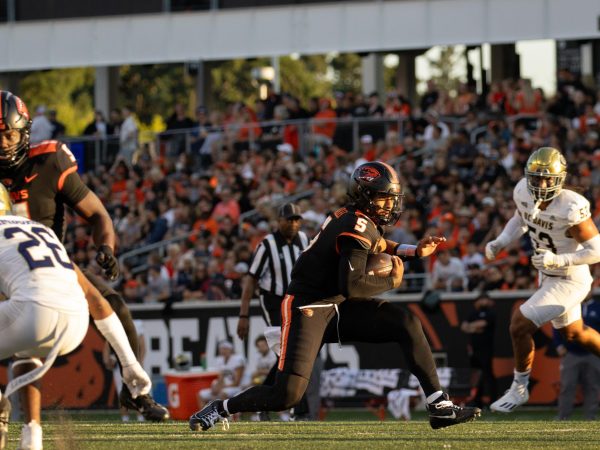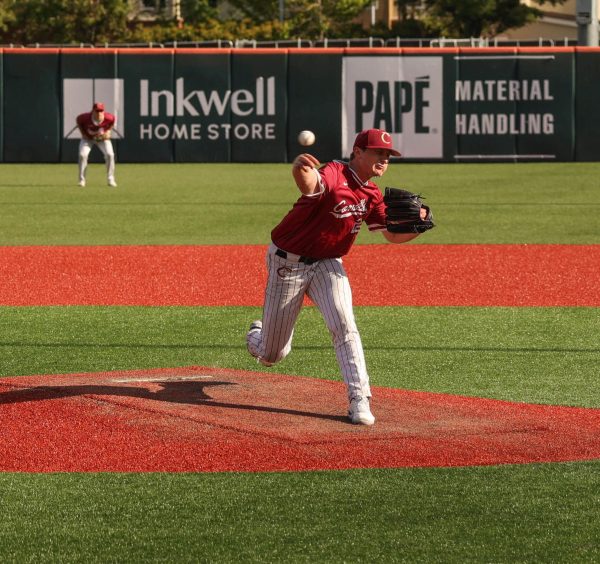Sports Breakdown: Track and Field
June 3, 2020
Track and field is a sport that includes athletic competitions based on the skills of running, throwing and jumping.
Competitions in track and field are called meets and are usually held outdoors, with the running events taking place on a 400-meter oval track and the field events of throwing and jumping taking place inside or nearby the oval. These events usually take place simultaneously.
Running events vary in length, with sprints–short races in which acceleration and speed are important–usually between 100 and 400 meters in length. Middle and long-distance races also occur, with runners making multiple laps around the circuit.
Relay races are the only track and field event where teams of athletes compete directly against each other. Teams are generally comprised of four runners who compete a specified distance before handing over a baton to a teammate.
In throwing events, athletes attempt to throw items such as a discus, hammer, javelin or a heavy ball, called a shot, as far as possible. Jumping events include the High Jump, Long Jump, Pole Vault, and Triple Jump.
Track and field is one of the oldest sports in the world. In ancient times, athletic contests were often held in conjunction with religious festivals and events such as the ancient Olympic Games in Greece. The first modern Olympics were staged in 1896.
Glossary
Baton: A hollow tube that is passed between runners in relay races.
Bell Lap: The final lap of a multi-lap race, named because a bell is run to notify runners of the last lap.
Changeover: The exchange of the baton from one runner to the next in a relay race.
Discus: A throwing event where a metal disc is thrown for distance.
Field Event: A jumping or throwing event.
Hammer: A throwing event where a large heavy ball connected to a handle with a long chain is thrown for distance.
High Jump: A jumping event where athletes must clear a high bar without knocking it over by jumping.
Hurdle: An obstacle on the track during a race that competitors must jump over while running.
Javelin: An event in which a sphere-like javelin is thrown for distance.
Lap: One complete rotation around the track. Also, to overtake a runner who is one or more laps behind.
Long Jump: A jumping event in which athletes compete for the longest jump in distance.
Pole Vault: A jumping event where a long pole is used to propel a jumper to great heights.
Sand Pit: An area in a jumping event in which an athlete lands.
Shot Put: A throwing event where a heavy ball is thrown for distance.
Starting Blocks: Two blocks mounted on an adjustable frame that provides a sprinter with a surface to brace their feet at the start of a race.
Steeplechase: A middle to long-distance run with obstacles including high hurdles and water.
Triple Jump: A jumping event with three distinct phases to jump including a hop, a step, and a jump.
Notable Athletes:
Jim Thorpe: Considered by many as the most versatile athlete in modern sports, Thorpe won gold medals in the 1912 Summer Olympics for pentathlon and decathlon, becoming the first Native American to win a gold medal for the United States. Later in his career, Thrope also competed in the National Football Leauge and Major Leauge Baseball. The town in Pennsylvania where his remains are buried is named in his honor.
Jesse Owens: Recognized by The New York Times as “perhaps the greatest and most famous athlete in track and field history,” Owens achieved international fame in the 1936 Summer Olympics in Berlin by winning four gold medals: 100 meters, long jump, 200 meters, and 4×100 relay. The most successful athlete of the games, and as a black man, Owens became a hero by crushing Hitler’s myth of Ayran supremacy. However, despite his heroic achievements in Europe, Owens was still treated as a second-class citizen when he returned to the United States, having to ride in a freight elevator to his reception in New York. Later in life, Owens was awarded the Presidental Medal of Freedom in 1976 by Gerald Ford.
Usain Bolt: This Jamaican sprinter was dubbed “the fastest man in the world,” after winning three gold medals at the 2008 Summer Olympics in Bejing while also becoming the first man in Olympic history to win both the 100 and 200-meter races in record times. At the 2012 Summer Games in London, he won three more gold medals and set an Olympic-record time of 9.63 seconds in the 100-meter event. In his final Olympic appearance in 2016, Bolt won an additional three gold medals. However, he was stripped of his gold in a 4×100 relay race due to a teammate’s doping violation. An 11-time World Athletics Champion, Bolt retired from professional competition following the 2017 World Championships.
Babe Didrickson Zaharias: Like Thorpe, Didrickson is widely regarded as one of the most versatile athletes of all-time. Born as Mildred Ella Didrickson in 1911, she earned the nickname “Babe,” a reference to baseball legend Babe Ruth, after hitting five home runs in a game as a child. In the 1932 Summer Olympics in Los Angeles, Didrickson set four world records and winning two gold medals in 80m hurdles and javelin throw and one silver medal in the high jump. Doing so, she became the lone Olympic athlete, male or female, to ever win medals for running, throwing and jumping. Following her success in the games, Didrickson took up golf, enjoying a successful career in the LPGA Tour where she won 41 tournaments, including 10 majors. In 1953, Didrickson was diagnosed with colon cancer and publicly advocated cancer awareness until her death in 1956.
























































































































